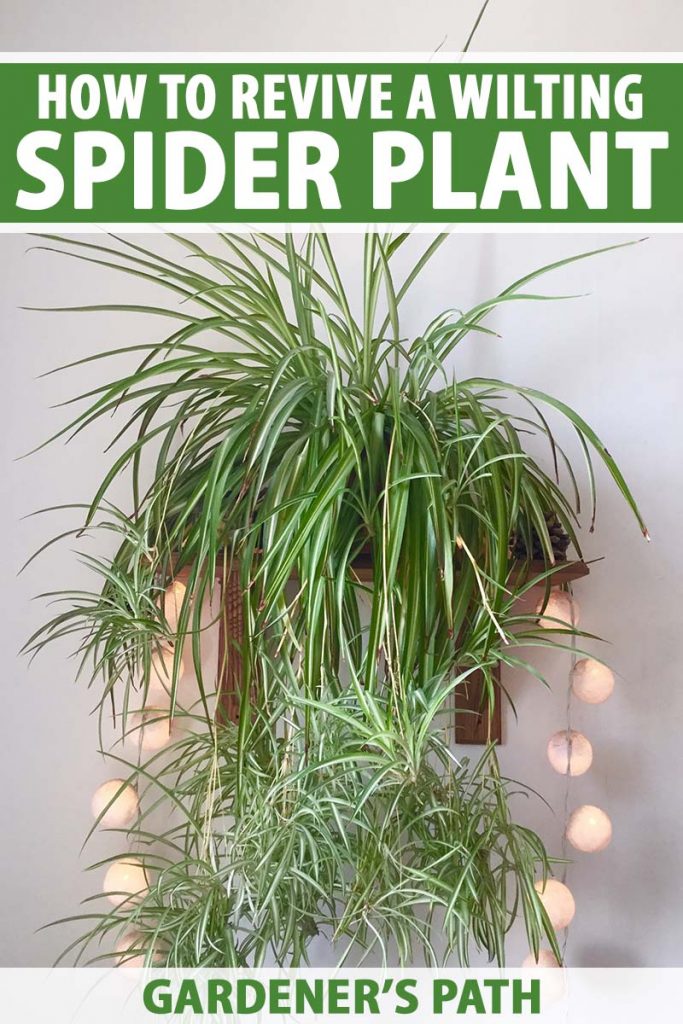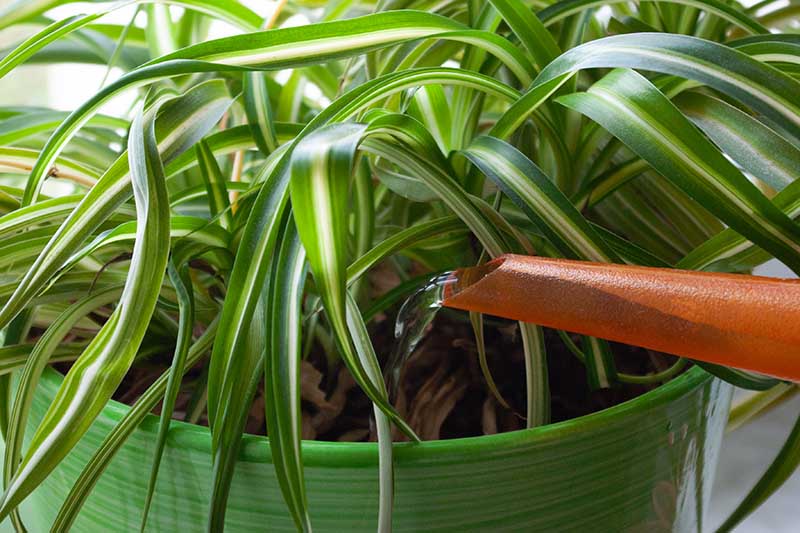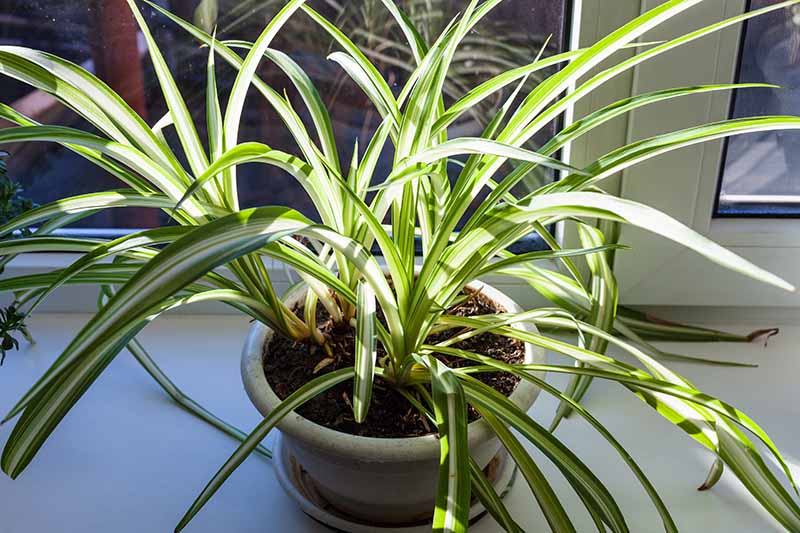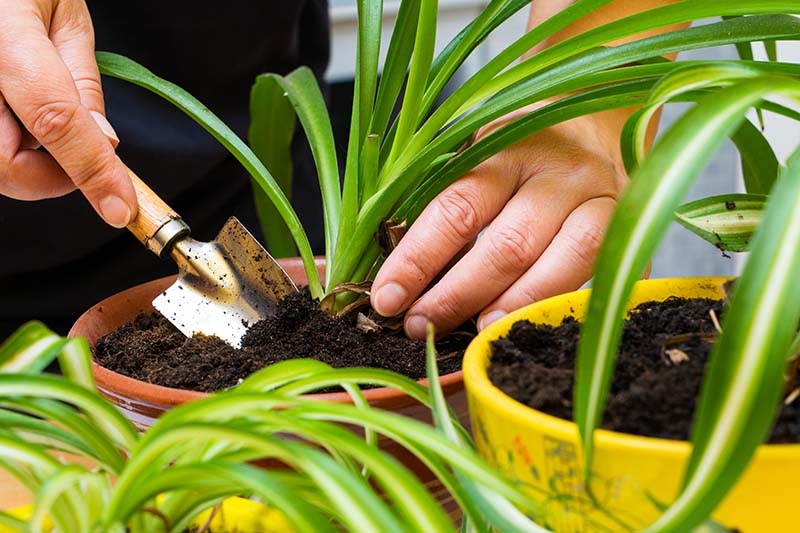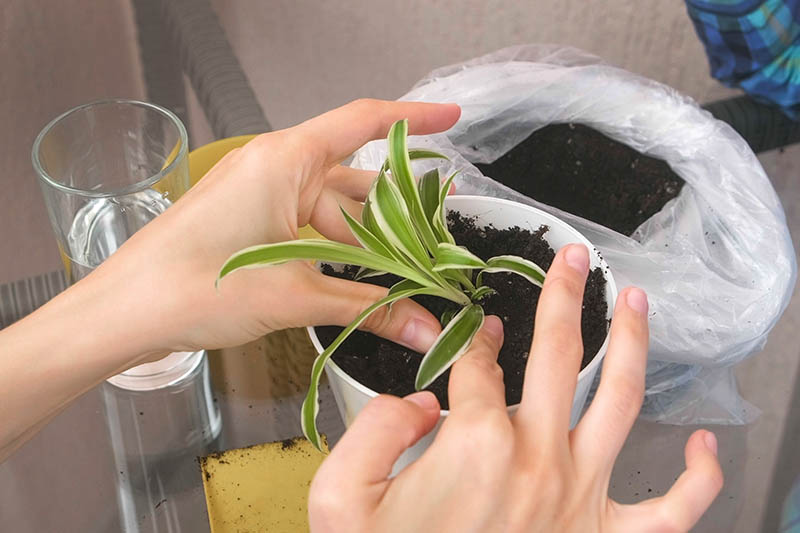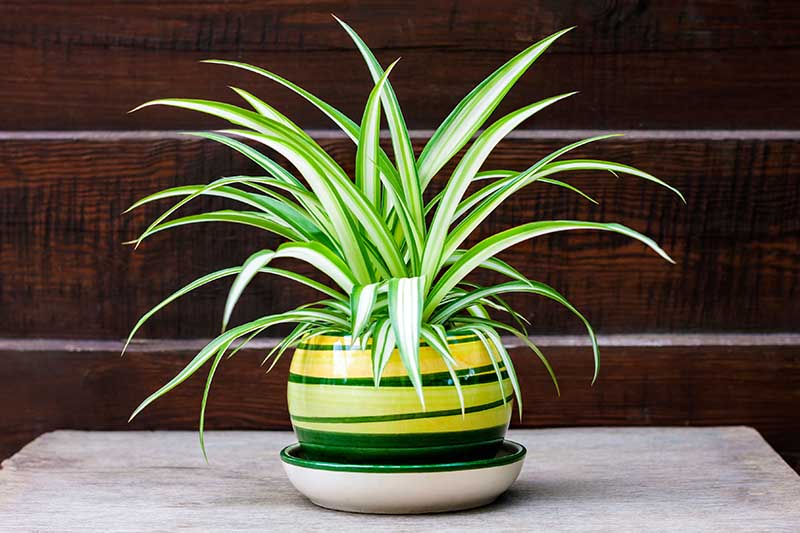If you are like me, however, and tend to completely forget about your houseplants for weeks or – I’ll admit it – sometimes months on end, you may find yourself faced with a wilting spider plant. Lucky for folks like me, this issue is not hard to recover from. We link to vendors to help you find relevant products. If you buy from one of our links, we may earn a commission.
Reasons for Wilting
There are a few different reasons why spider plants may experience problems with wilting. And if you notice leaves that start to droop, that are pale, or that have become brown at the tips, it may be time to reexamine their growing conditions. Making small modifications to inputs like water, light, fertilizer, or the container it’s growing in can do wonders to revitalize a sad looking specimen.
Too Much Water, or Not Enough?
One of the first things to check if you find yourself faced with a wilting spider plant is how much water it is getting. Overwatering in particular can lead to root rot. If you tend to water the soil until it becomes soggy, it may be time to cut back. Bleached looking leaves, possibly with darkening edges, may also be a sign that you are drenching the roots.
Conversely, forgetting to water regularly, especially during the summer growing season, can also cause foliage to wither. In spring and summer, water approximately once per week. After watering, the soil should feel moist but not wet. In the winter when growth slows down, allow the soil to dry out fully between waterings, about once every couple of weeks. If leaves start to look dry, try giving them a quick misting once in a while. If water seems to be pooling at the top of the container and not soaking into the soil, check whether you are using a soil mixture that drains well. It may be a good time to consider repotting – keep reading for more information on this below.
How Much Light Is It Getting?
Sometimes they will wilt because they are failing to get the correct amount of sunlight. Perhaps you set a pot in the perfect position in a window during the summer, but when winter comes around, that window no longer receives much light at all. You may find it necessary to move the container to a different location as the seasons change. Just make sure you continue to situate the pots in bright, indirect sunlight. While spider plants do enjoy soaking up some sun, too much direct sunlight can cause the foliage to overheat and burn at the tips.
If it appears droopy, perhaps with some browning leaf tips, and has been sitting in bright direct sun, try giving it a deep soak for several minutes and then relocate it to a cooler, shadier spot. If it is wilting somewhere in full shade or far away from a window, then move it to a spot that gets more light.
Has It Outgrown Its Container?
Repotting your spider plant is recommended about once a year. If you start to notice roots protruding out from the bottom of the pot, if growth seems stunted, or if it is starting to look a bit cramped, it might be time to give your plant a bigger space to grow.
Moving up to a new container also serves as an opportunity to refresh nutrient deficient or poorly draining soil.
Carefully remove it from its current home and transplant into a larger container filled with potting soil that drains well. Water until the soil is moist but not soggy. Continue with regular care.
Is It Getting Enough Nutrients?
If you have been watering correctly, providing the appropriate amount of light, and repotting as necessary, and leaves are still looking sad and withered, you may be dealing with a nutrient deficiency.
During the growing season, try feeding your spider plant a balanced liquid organic fertilizer once a month. I advise using an organic product to reduce the potential for chemical and salt buildup in the soil, which could also cause problems such as leaf tip burn. There is no need to fertilize during the winter, when it will be dormant. Thankfully, these resilient houseplants tend to bounce back easily, once you identify the problem and provide a little bit of TLC. That is why they are my indoor plants of choice!
Have you dealt with wilting spider plants? Please share your tips in the comments below. And if you found this article useful, you can find more spider plant care tips in these articles:
How to Grow and Care for Spider Plants 7 Tips to Get Rid of Fungus Gnats on Spider Plants Are Spider Plants Toxic to Cats?
Photos by Rose Kennedy © Ask the Experts, LLC. ALL RIGHTS RESERVED. See our TOS for more details. Uncredited photos: Shutterstock.
